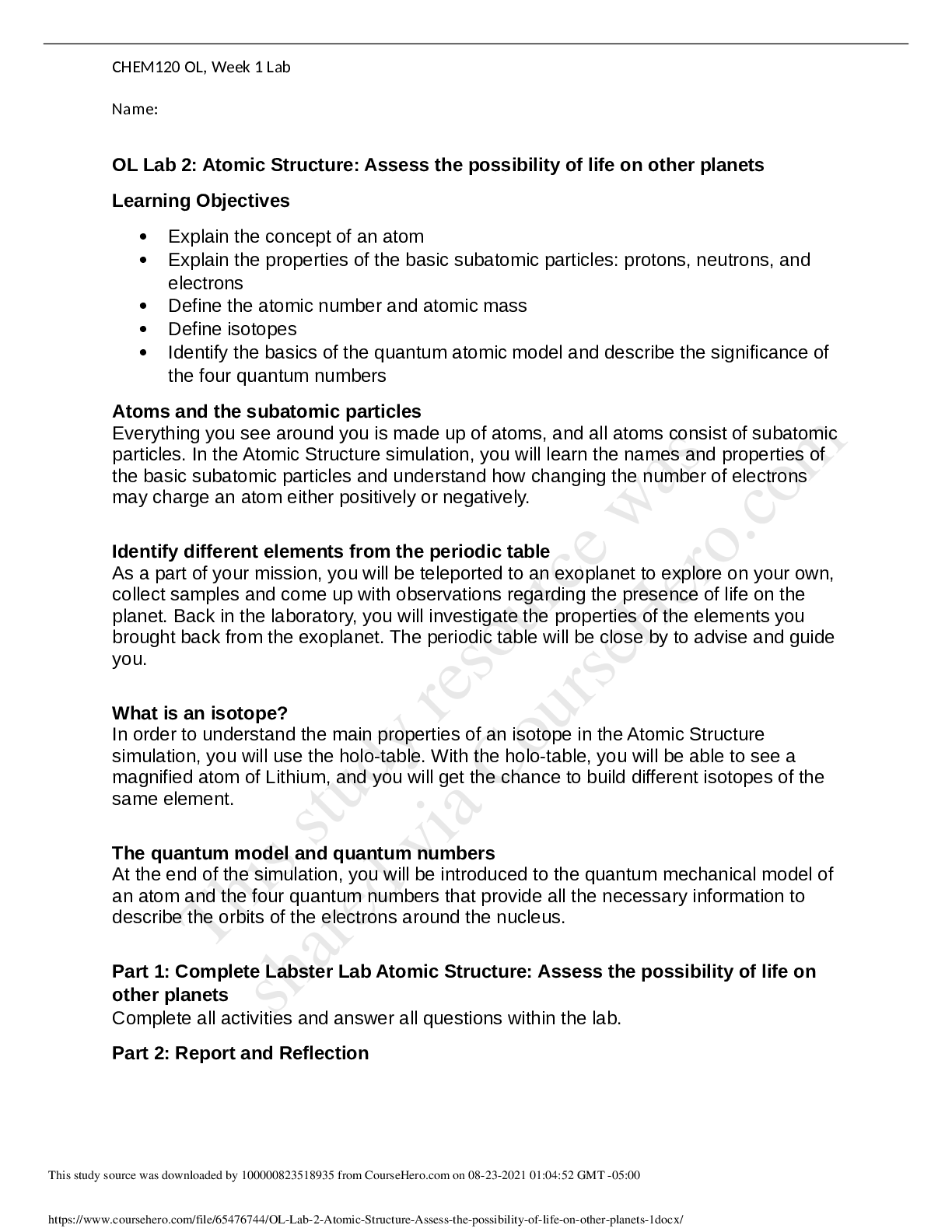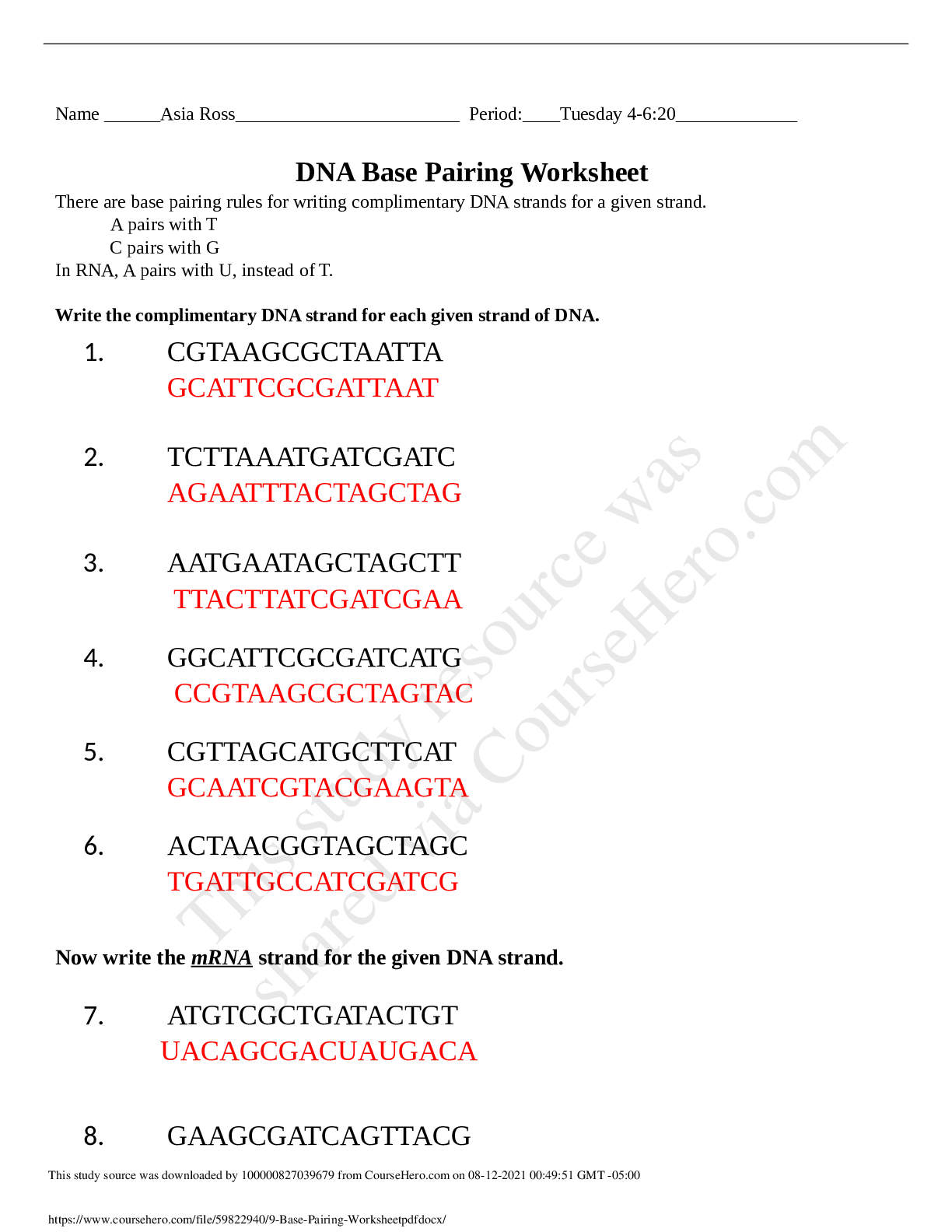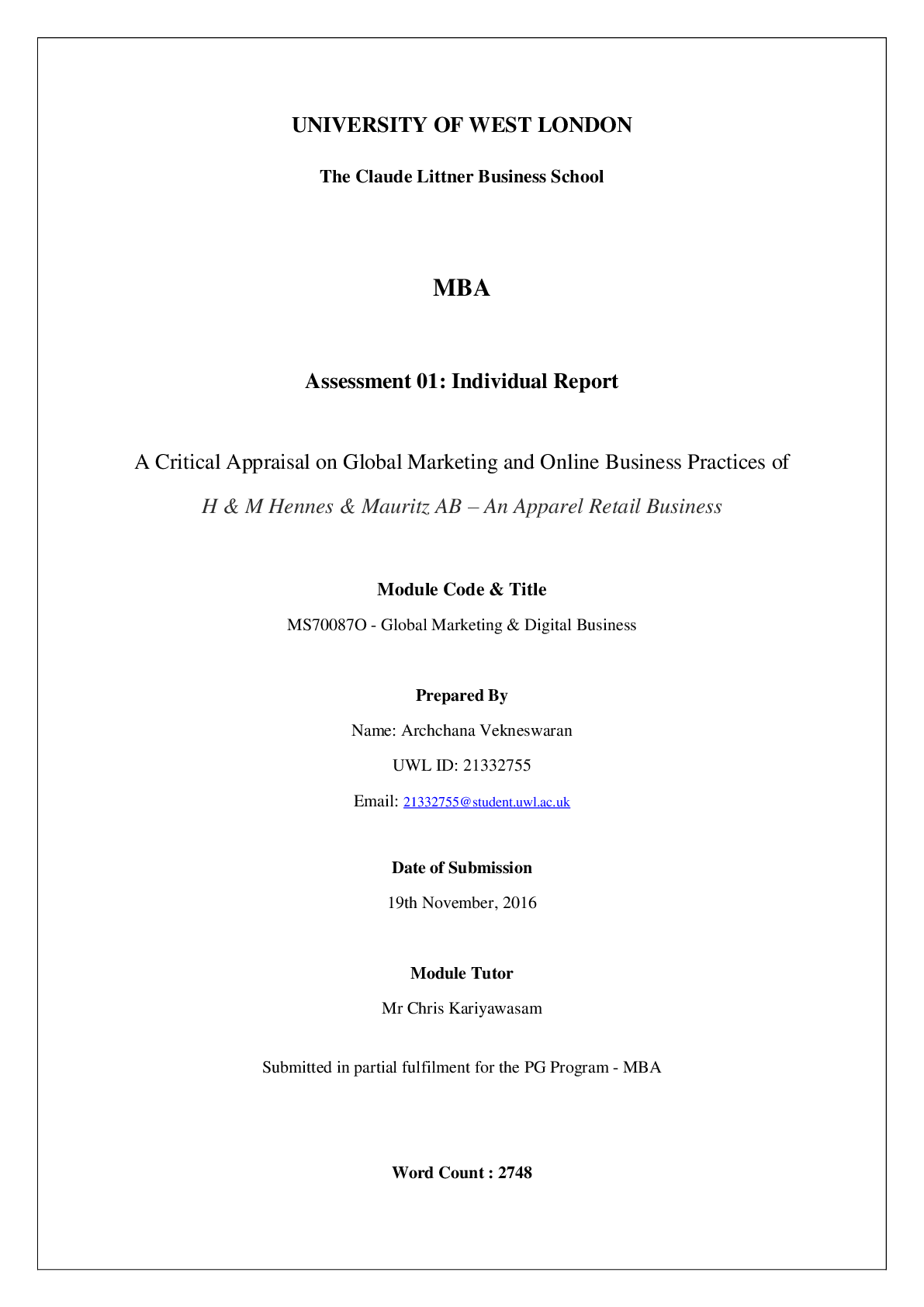BioChemistry > Lab Report > University of Texas_BCH 369L_Lab G report-REVIED AND EDITED BY EXPERTS (All)
University of Texas_BCH 369L_Lab G report-REVIED AND EDITED BY EXPERTS
Document Content and Description Below
Protein Function Analysis Techniques by Steve Vince Parish ([email protected]) and Michael Steelman Biochemistry Lab BCH369L M/W 8 – 11 Lab Module G Page | 1 chnique Principles Enzymes are ... biomolecules that act as catalysts in organisms to bring about specific biochemical reactions. As catalysts, enzymes do not act directly in the reaction, but perform necessary actions that bring about the reaction. This is often accomplished by causing conformational changes in biomolecules via influence on intermolecular forces (H-bonding, van der Waals forces, electrostatic bonds, and hydrophobic interactions). The analysis of these reactions can reveal information about the activity of the organism and biomolecules such as the binding affinity, rate, and number of binding sites. Module G was a review of methods for analysis and quantification of enzymatic reactions. Part 1 of module G1 used the Scatchard Equation to estimate the average number of occupied binding sites per biomolecule and the dissociation constant of the enzyme-molecule complex. The Scatchard Equation: This equation makes use of the concentration of free ligand [L], the total number of binding sites per macromolecule (n), and the formation constant of the complex (Kf). A plot of this equation with the fraction of binding sites occupied (v) on the y-axis and [L] on the x-axis should appear logarithmic. The point half-way to the horizontal asymptote will be where half the binding sites are occupied and corresponds with the [L] equal to Kf (larger values correspond with stronger binding). The inverse of Kf is the dissociation constant Kd (1/Kf = Kd). It’s important to note that the Scatchard plot may also appear non-linear. This is the case when each binding site is not equal, but exhibits cooperative binding. That is; the binding of ligand will result in greater binding affinity for ligand. The non-linear plot appears as two separate lines. nKf of this graph is between the two y-intercepts. Part 2 of module G1 used Job’s method to determine the average number of binding sites per molecule. Job’s method varies the ratio of enzyme to biomolecule in solution and measures the concentration of complex formed in each solution. Fluorescence is used to quantify the concentration of complex and is plotted on the y-axis versus XANS, the mole fraction of the solution, on the x-axis. Two lines are the result of the plot. These two lines cross at the equilibrium constant (Keq) of the enzyme-molecule complex and reveal the molar ratio of the enzyme to biomolecule at equilibrium. The more triangularly shaped the plot, the stronger the binding affinity. Module G2 was involved enzyme kinetic analysis. According to Boyer, “The initial reaction velocity (v0) of an enzyme-catalyzed reaction varies with the substrate concentration [S]” (pp. 252). The increase in [S] should correspond to an increase in v0 which can be used to calculate the catalytic efficiency (Kcat / KM) of an enzymatic reaction. Kcat is the turnover number or the number of molecules that can be converted to product per unit time and KM is the Michaelis constant determined graphically using the Michaelis-Menten equation (below). 2 | P a g e [Show More]
Last updated: 1 year ago
Preview 1 out of 9 pages
Instant download
.png)
Buy this document to get the full access instantly
Instant Download Access after purchase
Add to cartInstant download
Reviews( 0 )
Document information
Connected school, study & course
About the document
Uploaded On
May 07, 2021
Number of pages
9
Written in
Additional information
This document has been written for:
Uploaded
May 07, 2021
Downloads
0
Views
80


 (1).png)
.png)










